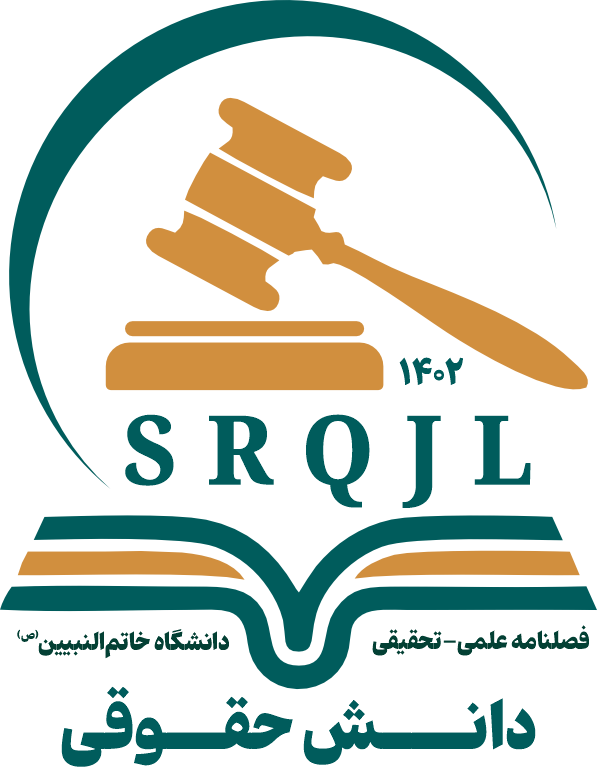
Scientific-Research Quarterly Journal of
Law Knowledge

Volume 3, Issue 8 (9-2025)
SRQJL 2025, 3(8): 103-122 |
Back to browse issues page
Download citation:
BibTeX | RIS | EndNote | Medlars | ProCite | Reference Manager | RefWorks
Send citation to:



BibTeX | RIS | EndNote | Medlars | ProCite | Reference Manager | RefWorks
Send citation to:
Sarwari M K. Non-Existent Matters in the Domain Principle of Nonmaleficence. SRQJL 2025; 3 (8) :103-122
URL: http://srqjl.knu.edu.af/article-1-105-en.html
URL: http://srqjl.knu.edu.af/article-1-105-en.html
Professor of Law, Faculty of Law, Khurshid University, Kabul, Afghanistan
Abstract: (390 Views)
The Principle of Nonmaleficence is one of the important principles in Islamic jurisprudence and civil law, playing a prominent role in the elimination of harm and the realization of justice. Recourse to this principle in the domain of existential rulings is unanimously accepted among jurists; however, the point of contention lies in its scope and authority over non-existential rulings.
This article, with a descriptive-analytical approach and a practical aim, employs a library-based method to examine the possibility of applying Nonmaleficence principle to non-existential matters. A precise response to the main research question can be effective in clarifying jurisprudential and legal responsibilities in cases such as failure to provide maintenance, refusal to fulfill obligations, or harmful silence.
The research findings indicate that, based on certain theories including those that consider the content of Nonmaleficence principle to be a prohibition of causing harm, a negation of a ruling by denying its subject, or merely a governmental decree—the principle of Nonmaleficence cannot serve as a basis for establishing rulings. However, from the perspective of theories that interpret Nonmaleficence as the negation of uncompensated harm or harm-based rulings, this principle can play an affirmative role in the issuance of rulings.
This article, with a descriptive-analytical approach and a practical aim, employs a library-based method to examine the possibility of applying Nonmaleficence principle to non-existential matters. A precise response to the main research question can be effective in clarifying jurisprudential and legal responsibilities in cases such as failure to provide maintenance, refusal to fulfill obligations, or harmful silence.
The research findings indicate that, based on certain theories including those that consider the content of Nonmaleficence principle to be a prohibition of causing harm, a negation of a ruling by denying its subject, or merely a governmental decree—the principle of Nonmaleficence cannot serve as a basis for establishing rulings. However, from the perspective of theories that interpret Nonmaleficence as the negation of uncompensated harm or harm-based rulings, this principle can play an affirmative role in the issuance of rulings.
Send email to the article author
| Rights and permissions | |
 |
This work is licensed under a Creative Commons Attribution-NonCommercial 4.0 International License. |

